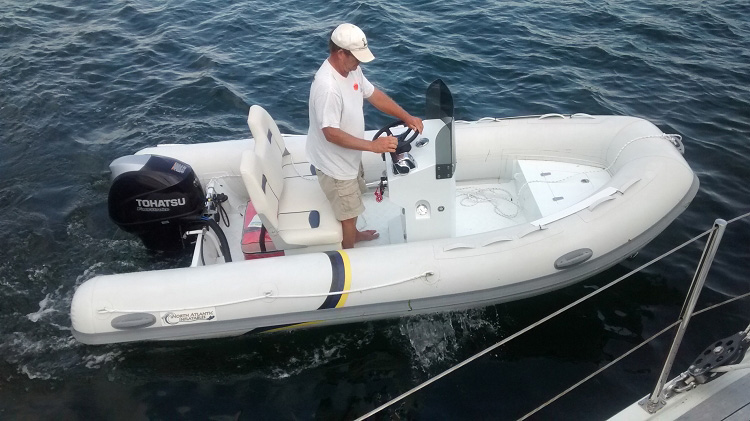Before you plan a family weekend on the water to enjoy the bright sun and a refreshing drink, you must keep in mind that the top priority in any boating adventure should be safety. It's a always good idea to prepare yourself for safe boating so that you can work out any kinks beforehand. Here are some useful preparations about what you should bring on board and how to prepare yourselves.
What to bring on board?
The U.S. Coast Guard requires every recreational vessel to carry specific life-saving and distress-signaling equipment. The following list includes necessities as well as some additional items that can come in handy:
1. Personal flotation devices (PFDs). Every passenger should wear a life jacket before boarding, so you need to get enough life jackets based on the number of passengers. And don't forget to bring a throwable flotation device that's easy to grab in case someone should fall over.
2. Flares or other signaling equipment. Distress-signaling devices are essential for any boating adventure. They can help others to find your location in an emergency. The flares should be under six years old to be legal, but if you have older, expired flares, you can keep them onboard as backups.
3. Fire extinguishers. Although you have a lot of water around you to fight a fire on your boat, fire extinguishers onboard are mandatory. Depending on the size of your vessel, you’ll need at least two Coast-Guard-approved fire extinguishers that are readily accessible.
4. An air horn or whistle. This device can help to call attention to yourself.
5. Navigation lights. Even if you plan to return before dark, you will need to bring your navigation lights just in case. Always check them before you set out and turn them on at night so that other boaters can see you. Low visibility and reflections off the water can make seeing an unlit boat very difficult.
6. GPS and navigational charts. If you don't want to get lost at sea, then these equipment are a must. They work great and show relevant information like water depths, hidden underwater features and other areas to be aware of, including commercial shipping lanes and restricted military areas.
7. A VHF radio and EPIRB. These are a Coast Guard requirements but also useful for recreational vessels. A VHF radio can help you communicate with other boaters or hail harbor patrol when you need help. And an Emergency Position-Indicating Radio Beacon (EPIRB) can function as a GPS locator to let rescuers know exactly where the drowning men are.
8. Other safety tools. Useful tools include a knife, repair kit and a manual pump. A knife or multitool can cut things when necessary and the repair kit can patch the damaged area on the inflatable tubes.
How to prepare everyone?
An important thing to avoid accidents on boats is to behave properly, includes both the captain and the passengers. The following are a few things to do to avoid potential safety hazards.
1. Avoid alcoholic beverages. We know that don't drink alcohol before driving, and boating is the same. Alcohol is the leading contributing factor to fatal boating accidents. So the captain should avoid drinking any alcohol and the passengers should also limit the amount of alcohol consume.
2. Prepare for high speed. Most people love to enjoy a faster speed on the open sea, so don't forget to prepare your guests and gear when you get up to speed, anything and anyone who isn't secured is more likely to fall.
3. Designate a lifeguard. The lifeguard should always keep an eye on the people who are swimming and remind people on the boat to wear a life jacket.
4. Prepare for the sun. Everyone should take sun protection such as sunscreen and hat, and keep hydrated to avoid sunburn and dehydration. Install a shade canopy on the boat if possible.
5. Respect other boaters. Besides giving people enough space to enjoy a relaxing day to themselves, it’s safest to steer clear of other boats. Leaving a healthy distance between you and other boats ensures that you don’t come too close to unseen swimmers and don’t disrupt anyone’s peace with a big wake.
You should learn all details of your rigid inflatable boat and safety equipment before head out onto the water. Once you have the above basic preparations down for your inflatable boat adventure, you can rest easy and keep your cool in any situation. As a professional
inflatable boats manufacturer and supplier, Sunjoy Inflatables provides custom inflatable kayaks, dinghies, rafts, pontoons of different sizes for various water activities.

